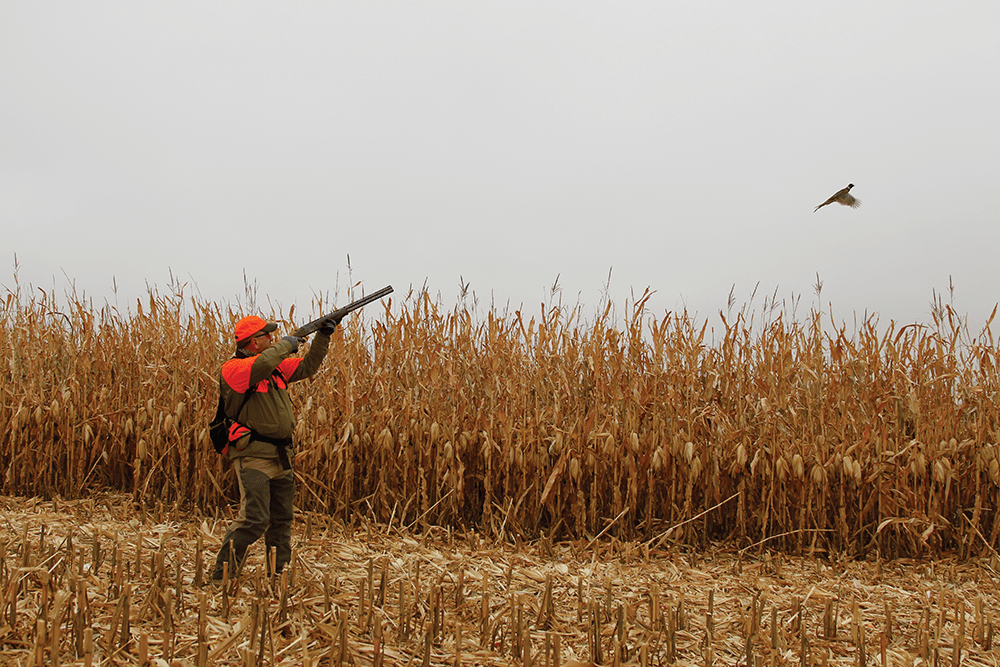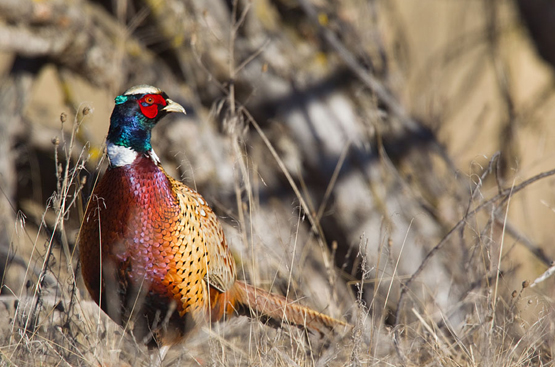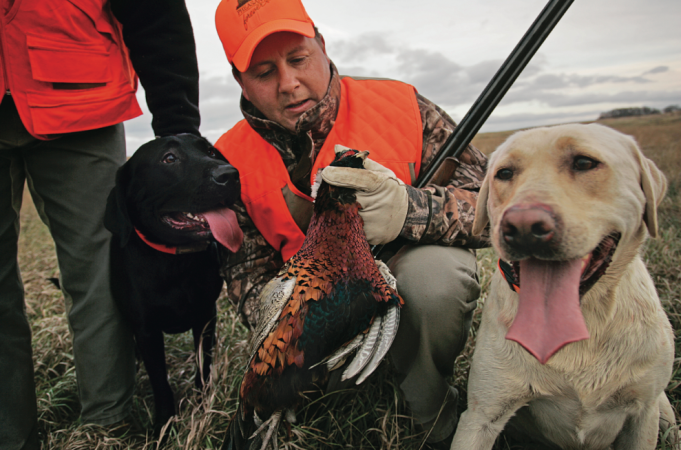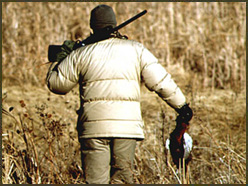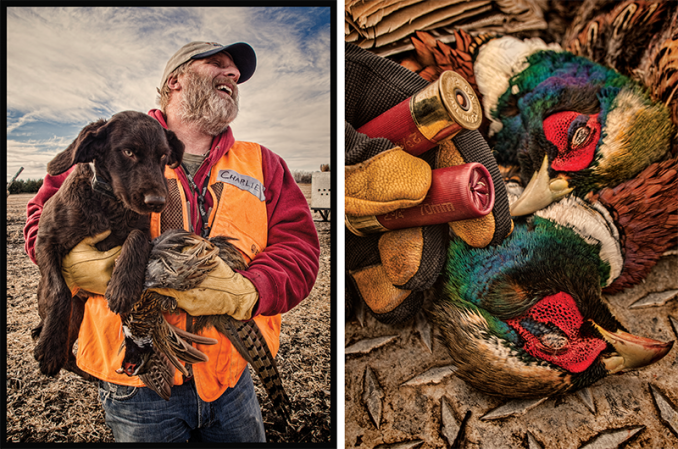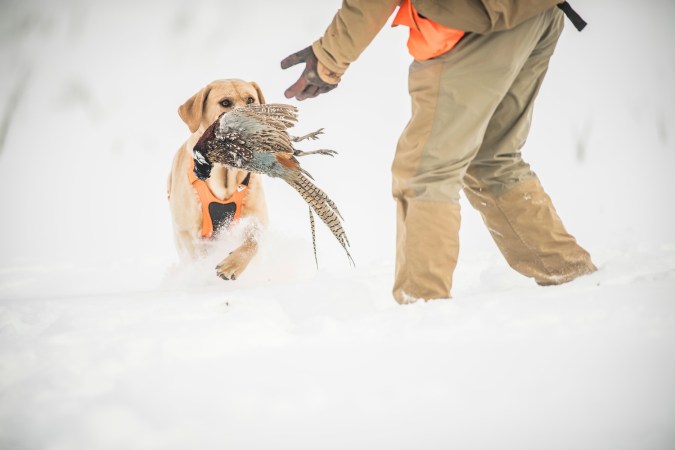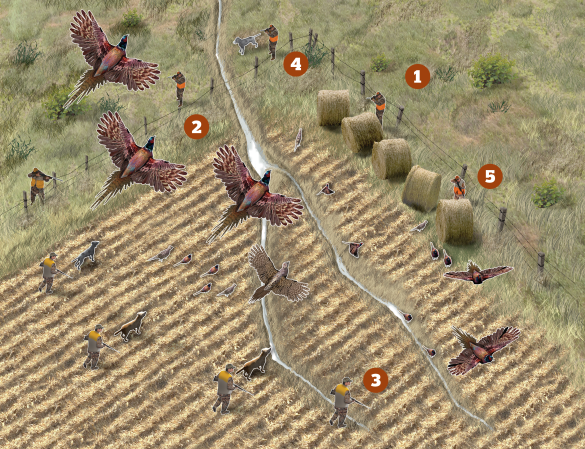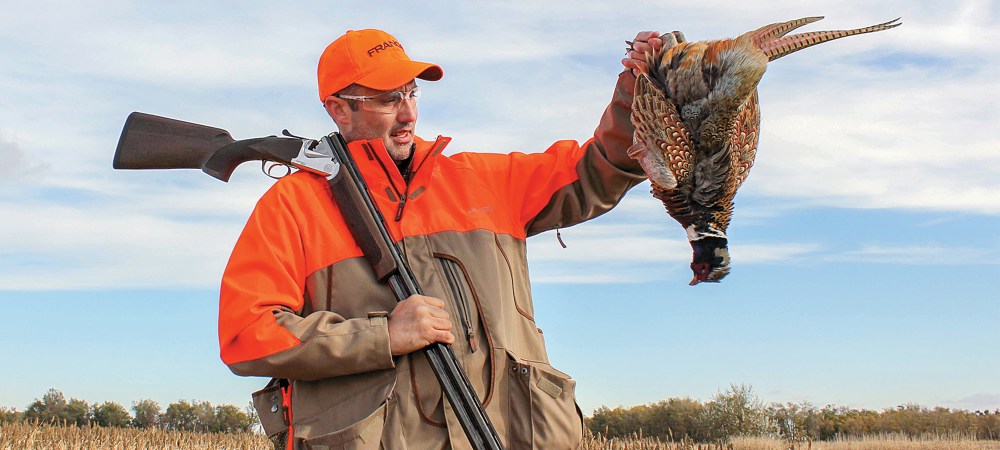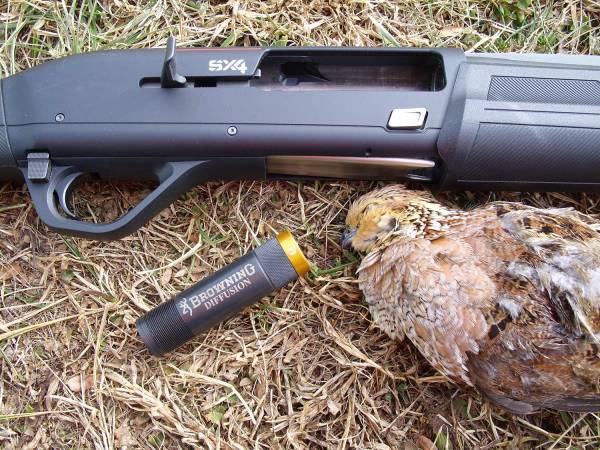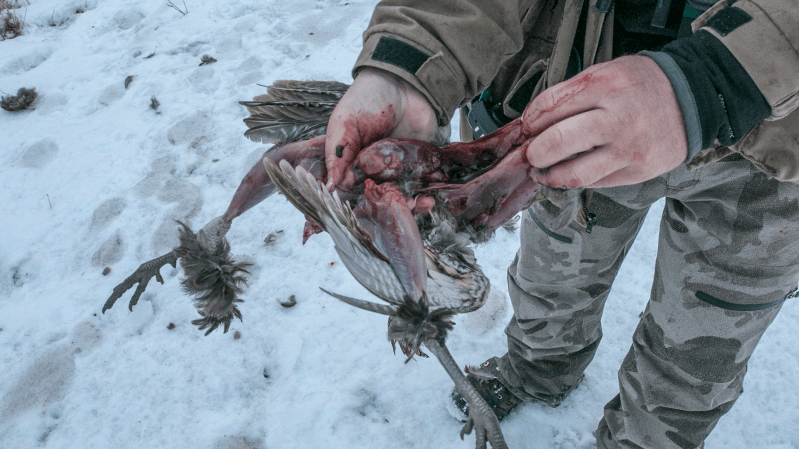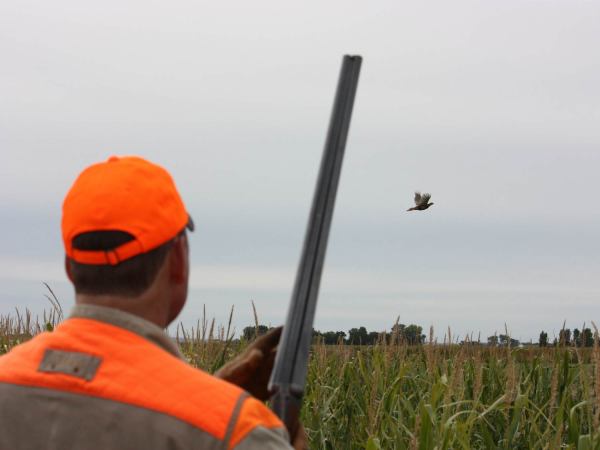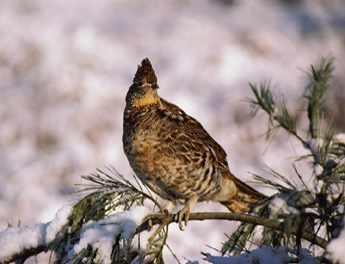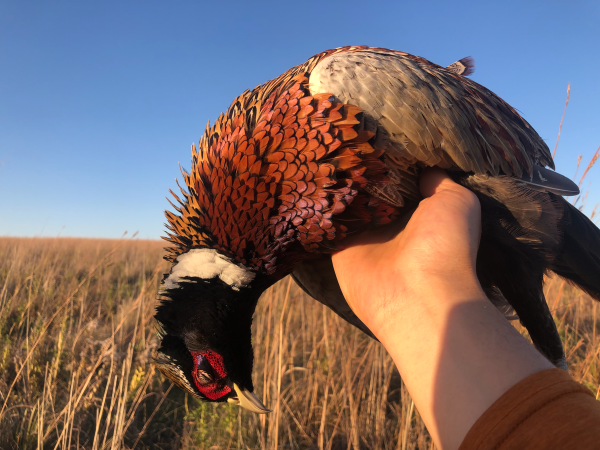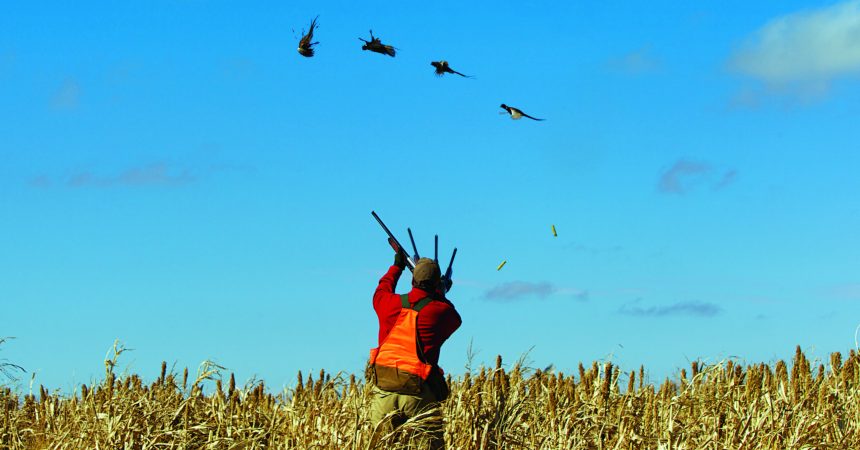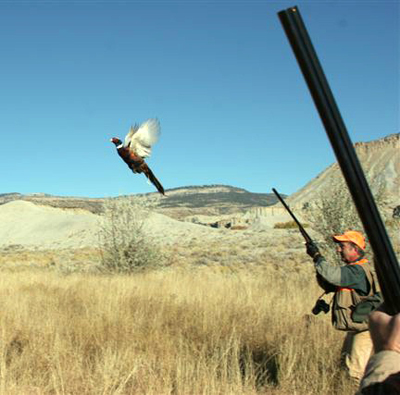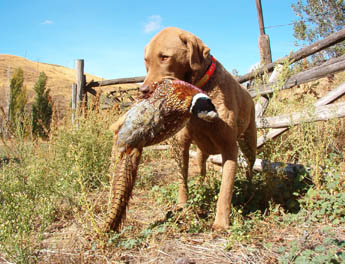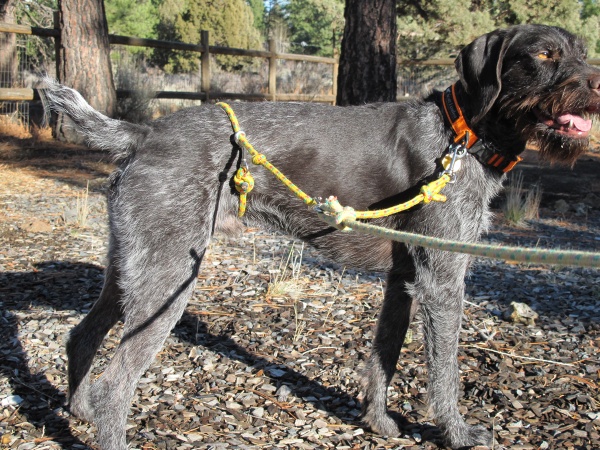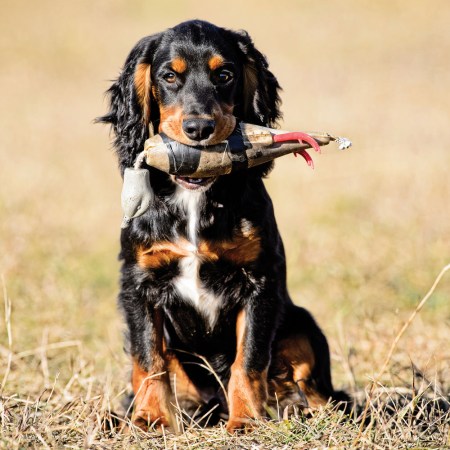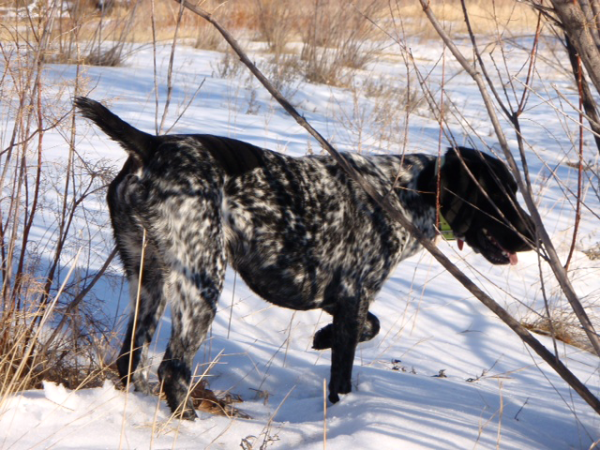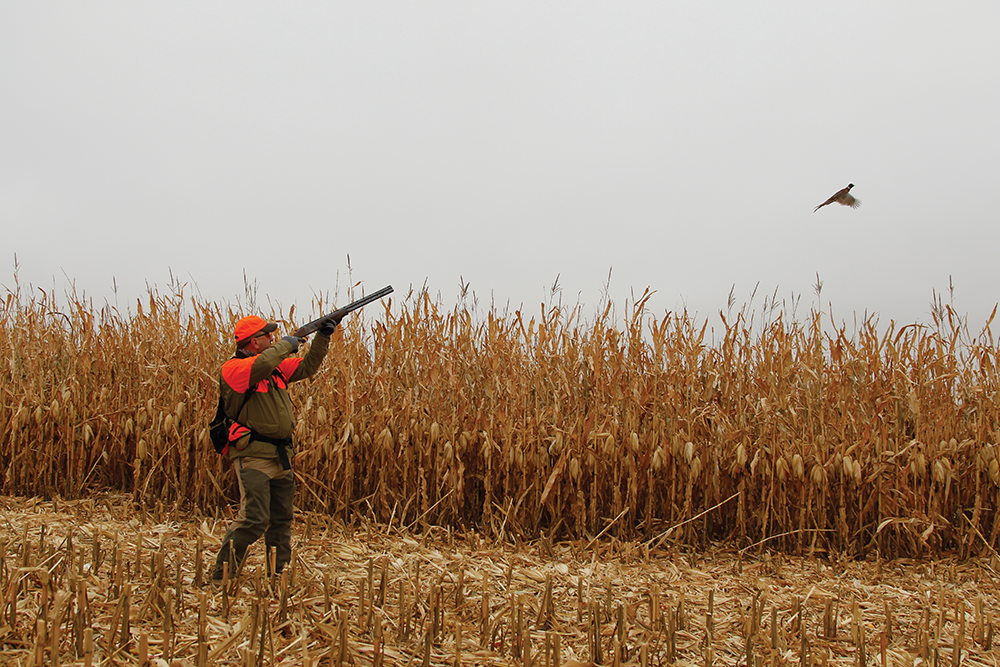
The best way to succeed at hunting pheasants is to join forces with a properly trained bird dog. The second best way is by yourself, without a dog. Contrary to conventional wisdom, bagging ringnecks with no help other than that of your boots, gun, and shells isn’t just possible, it’s amazingly effective. I urge everyone to hunt with a dog, and I do so myself whenever I can. But sometimes I just can’t, and yet I get my roosters anyway. Bowser’s biggest boost to your bag comes in the form of retrieves. Yes, pointers and flushers can probably locate more birds than you could alone, but their real contribution is fetching dead and crippled birds from the weeds. You can’t beat four legs and a canine nose for that. Therefore, here are three things you must do when you’re dogless in Dakota.
The three commandments of going solo…
1. Shoot straight.
2. Shoot one bird at a time and only one bird at a time.
3. When you knock a bird down, glue your eyes on the spot where it fell, open the chamber of your gun to make it perfectly safe, and run to the crash site. Search diligently. Wing-tipped roosters are capable of evading even the best dogs, but if you race right to the spot, you’ll usually find your bird. Stop and listen. Often you’ll hear it flapping, rustling, or squirming into the dried vegetation. Jump on it.
Promise to do those three things and I’ll tell you the seven secrets for finding pheasants without canine assistance.
1) Walk softly and carry a big stick. Actually, a 20- or 28-gauge will do, though most rooster hunters prefer a 12-gauge. Regardless, the key is to be as quiet as possible. You may walk slowly or quickly, but walk into the wind or across it if possible. A 5 to 15 mph breeze is perfect for rustling vegetation and providing auditory cover. By the time Mr. Longtail realizes you’re close, it’s too late. He panics, he flies, he dies.
2) Know their routines. Pheasants wake at dawn, preen for a bit, then walk or fly to breakfast—usually in a grainfield. They’ll eat for an hour or two before moving into loafing cover. This could border the feed field or be a half mile away, but it will be dense and undisturbed. An hour or two before sunset, they’ll make another grocery run, fill their crops, and head to roosting cover, often in surprisingly short grass in expansive fields.
3) Think and strategize. If hunting pressure has been heavy in the area, feeding and loafing schedules might be off. Other hunters could bump birds out of feed fields early. Regular traffic through dense cover can encourage birds to hide in odd places, like small clumps of weeds in a barren field. Observe, keep an open mind, and take the road less traveled.
4) Attack huge fields. Vast chunks of CRP grass don’t require an army to flush effectively. Walk their edges 10 to 30 yards in. Zigzag now and then, pushing right to the barren edge. Be ready at all corners. Birds often run there, then hold and panic. Ignore the wild flushers—one or more will hold tight. That’s the one with your name on it.
5) Maintain the perimeter. Walk the remaining edges of that big field, staying within shotgun range of the fringe. Persistence unnerves birds. They’ll eventually give up and take to the air.
6) Hit the middle. After you’ve circumnavigated a big field, cut across it diagonally. This course will put you right through a host of crafty birds that have huddled in the center.
7) Sneak up on them. As the evening feeding session nears, birds begin easing toward the edge of the dining room. An hour before sunset, 98 percent of any field’s pheasants could be sitting within 20 yards of the edge between dense cover and the smorgasbord. If you stay just far enough into the grass so that it blocks their view of your approach, you should be able to walk right up and say “surprise.
